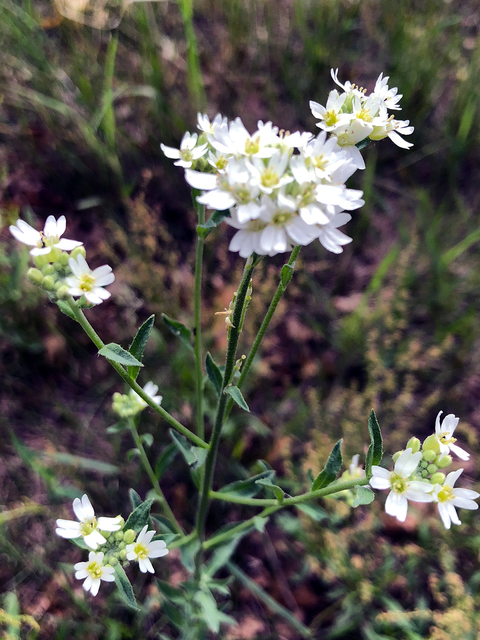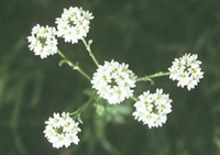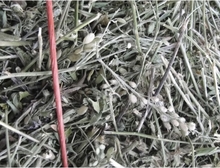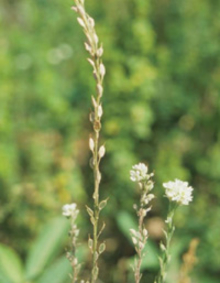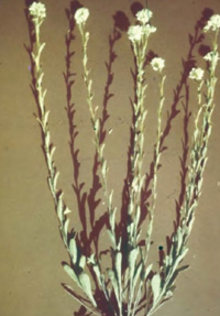Quick facts
-
Don’t feed hay containing hoary alyssum to horses.
-
Hoary alyssum is common in disturbed areas, meadows, pastures and hay fields.
-
It’s toxic in fresh pasture or dried in hay and causes “stocking up,” fever and founder.
-
Remove horses from sources of hoary alyssum.
-
Hand pulling, mowing and herbicides can help control hoary alyssum.
Hoary alyssum is common throughout Minnesota, the upper Midwest and Western states.
- It is most abundant in disturbed sites.
- It’s also found in meadows and pastures and is a common weed in hayfields.
- Hoary alyssum is more adapted to dry conditions on sandy or gravely soils.
- It prefers direct sunlight but tolerates shade.
Lifecycle
Hoary alyssum can be an annual, winter annual, biennial, or short-lived perennial. It spreads rapidly due to the high amount of seeds it produces per plant.
Identifying hoary alyssum
Stems
-
Grayish-green
-
Hairy
-
1 to 3 feet tall
-
Many branches near the top
Leaves
-
Oblong-shaped
-
Grayish-green
-
Covered with rough hairs
Flowers
-
White
-
Four deeply-divided petals
Seed pods
-
Hairy
-
Oblong shaped, swollen-like with a point on the end
Toxicity
Hoary alyssum is toxic when:
-
Horses graze the fresh plant in the pasture.
-
Horses eat the dried plant in hay.
Horses usually prefer other, more palatable forages over hoary alyssum. Cases of hoary alyssum poisoning still occur in pastured horses. Most hoary alyssum poisoning occurs when horses eat infested hay.
Horses react differently to hoary alyssum toxicity. You can usually see signs 12 to 24 hours after the horse ingests the plant.
About 50 percent of horses eating hoary alyssum have the following signs:
-
Swelling and fluid build-up in the lower legs, “stocking up”
-
A fever of 103 F or higher
-
Warm hooves
-
Pronounced digital pulse (laminitis)
-
Stiff joints
-
Not willing to move
-
A “camped out” stance
-
Rarely, death
Death didn’t occur in any horses dosed experimentally with hoary alyssum, but researchers observed all the other signs.
Don’t transport horses with laminitis during the acute phase of poisoning.
Clinical signs normally go away with supportive treatment 2 to 4 days after removing the weed source. Horses that foundered may take more time to recover. Horses may not return to full performance for a few months after the onset of clinical signs.
Control
-
A healthy, dense stand of pasture forages can prevent the growth or spread of hoary alyssum.
-
Hand pulling or digging and mowing before flowering can control small infestations.
-
A few herbicides work on hoary alyssum.
-
You may need to apply it more than once.
-
Apply the herbicide before the plant flowers.
-
Hand pull or mow flowering weeds before seed production.
-
Always follow grazing restrictions and pertinent information stated on the herbicide label.
-
CAUTION: Mention of a pesticide or use of a pesticide label is for educational purposes only. Always follow the pesticide label directions attached to the pesticide container you are using. Be sure that the area you wish to treat is listed on the label of the pesticide you intend to use. Remember, the label is the law.
Reviewed in 2021


